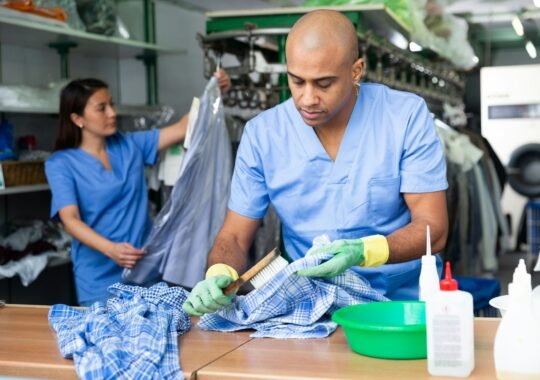Key Takeaways:
- Secondhand vaping poses significant health risks, especially to children and non-smokers.
- The prevalence of vaping has increased dramatically, leading to more exposure to secondhand aerosols.
- Understanding these risks can help make informed decisions about vaping in public spaces.
Introduction to Secondhand Vaping
The increasing popularity of vaping is leading to a growing public health issue with secondhand vaping. It’s crucial to understand the unseen risks associated with secondhand aerosol. For instance, is secondhand vape smoke toxic? According to multiple sources, it indeed carries significant health dangers that the public needs to be aware of (https://www.undo.org/disease/secondhand-vape). Unlike the relatively well-known dangers of secondhand cigarette smoke, the aerosol produced by e-cigarettes contains a complex mix of chemicals that can have various adverse effects.
Although vaping is commonly promoted as a safer option than smoking, it does not imply that it is entirely safe, especially for individuals who inhale secondhand aerosol. Health experts are becoming increasingly alarmed by the potential risks, especially given the rapid increase in vaping popularity.
What is Secondhand Vaping?
Secondhand vaping refers to the involuntary inhalation of aerosol (commonly but incorrectly called vapor) produced by electronic cigarettes or similar devices used by others. Unlike traditional cigarettes, e-cigarettes emit a variety of chemicals that can be harmful to non-smokers, especially in enclosed spaces.
The vapor created by e-cigarettes may include nicotine, tiny particles, and small amounts of harmful toxins.
Research has shown that aerosols contain harmful substances such as heavy metals (lead, nickel, and chromium), volatile organic compounds (benzene), and cancer-causing agents (formaldehyde). This makes exposure to secondhand vape aerosol a significant health concern, much like secondhand smoke from traditional cigarettes.
Health Risks Associated with Secondhand Vaping
- Respiratory Issues: Exposure to secondhand aerosol can irritate the respiratory system, exacerbating conditions like asthma and bronchitis. The particles in the aerosol can penetrate deep into the lungs, causing inflammation and increasing the likelihood of respiratory problems.
- Cardiovascular Diseases: Studies suggest that exposure to e-cigarette aerosol can have adverse effects on heart health, potentially increasing the risk of cardiovascular diseases. This is especially worrisome for people with existing heart conditions who may be more vulnerable to these dangers.
- Impact on Children: Children are particularly vulnerable, as secondhand exposure can affect their developing lungs and immune systems. Repeated exposure can lead to developmental problems and increase the risk of respiratory illnesses and infections.
For more information on the specific chemicals and their effects, refer to this CDC resource on e-cigarettes. Understanding these health risks is the first step toward taking appropriate preventive measures.
Prevalence of Vaping and Its Impact
With the rise in vaping, more people are inadvertently exposed to these aerosols. According to a study by the National Institutes of Health, vaping among teenagers has surged, which indirectly increases the exposure risk to younger siblings and peers. This is particularly concerning as adolescents are at a critical stage of lung development, making them more vulnerable to the harmful effects of secondhand vape aerosol.
The widespread acceptance and use of e-cigarettes have led to more instances of secondhand exposure in public and private spaces. As vaping becomes more normalized, the potential for non-users, including children, pregnant women, and individuals with preexisting health conditions, to inhale harmful substances increases.
Statistical Insights
Research indicates that approximately 1 in 5 high school students reported using e-cigarettes in 2020. These increasing numbers highlight the growing necessity to address the issue of secondhand exposure. With more adolescents vaping, there is a ripple effect that extends the risk to families, friends, and communities.
Moreover, secondhand exposure is not limited to just the home environment. Public spaces like parks, restaurants, and even schools are places where non-smokers may come into contact with secondhand vape aerosol, further emphasizing the need for widespread awareness and preventive measures.
How to Protect Yourself and Others
- Avoid Enclosed Spaces: Try to avoid areas where vaping is allowed, especially if you are with children or individuals with respiratory issues. The concentration of harmful substances is higher in confined spaces, making it more likely for non-users to inhale significant amounts.
- Advocate for Vaping Restrictions: Support policies restricting vaping in public places to reduce secondhand exposure. Many states and municipalities are implementing vaping bans in public areas to protect non-smokers from involuntary exposure.
- Stay Informed: Regularly update yourself on the latest research and guidelines related to secondhand vaping. New studies continue to shed light on the health impacts of vaping, and staying informed can help you make better decisions about protection strategies.
Being proactive about reducing secondhand exposure is critical to safeguarding everyone’s health. Simple actions like ventilating indoor spaces, requesting no-vape zones, and educating peers about the risks can significantly impact.
Real-Life Examples
Lisa, a mother of two, noticed her children’s increasing respiratory issues and linked them to her husband’s indoor vaping. Upon switching to vaping outdoors and ensuring proper ventilation, her children’s health improved remarkably. This example underscores the real impact of secondhand vaping and the importance of taking preventive measures.
Similarly, a high school in California implemented strict no-vaping policies after several students reported respiratory problems. The school conducted health awareness sessions for students and parents, emphasizing the dangers of secondhand vaping. The initiative decreased vaping incidents on campus and improved the overall air quality in school premises.
Conclusion
Understanding the hidden dangers of secondhand vaping can significantly improve public health. We can protect ourselves and our loved ones from these unseen risks by staying informed and advocating for safer practices. Remember, it’s not just about individual choices but also the collective well-being of our communities. Educating others about the risks and taking preventive measures can create a safer environment for everyone.





